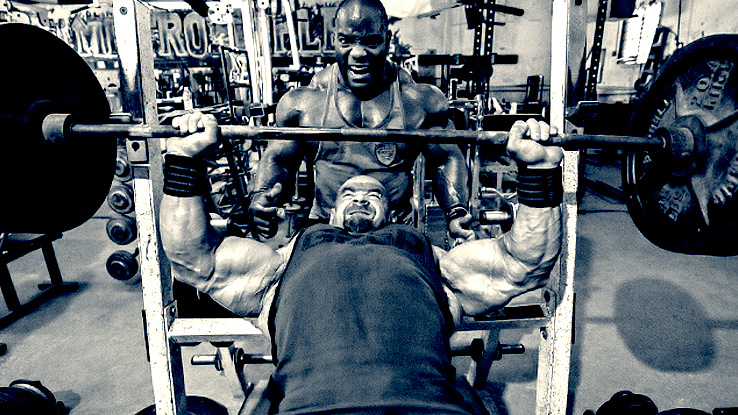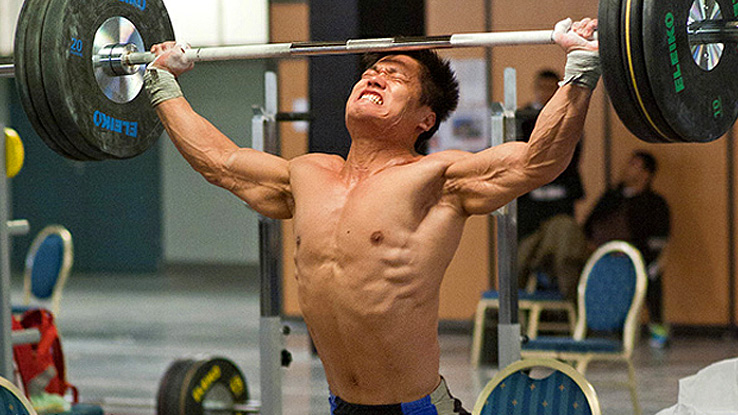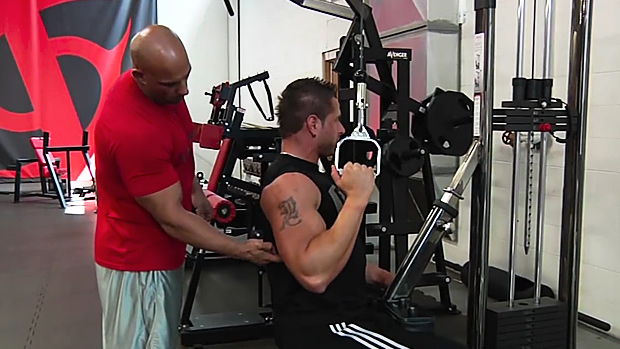There are volume proponents and intensity proponents in the strength world. The Volume proponents argue that doing multiple sets is the optimal way to train, while the intensity guys insist that one set taken to the limit is more than enough.
The fact is, both philosophies will build muscle and strength, but combining the two may create the greatest training system of all. This combination can be described in one sentence: Perform multiple sets and then take the last set to oblivion.
Let's get this straight. In strength research, intensity is the total amount of weight lifted per repetition (absolute intensity), or the amount of weight lifted relative to the one rep maximum (1RM), expressed as a percentage of 1RM (relative intensity).
To sum up a lot of boring physics jargon, you must increase either the load or the speed of the concentric action if you want to increase intensity.
High Intensity Training, as most people recognize it, is not high intensity at all, but rather high density training. It should be abbreviated HDT instead of HIT. The reason for this is that moderate intensities are used in HIT-style training, but sets are extended and taken to utter concentric, isometric, and eccentric failure. Basically, a lot of work is performed in a very short period of time. Submaximal loads are used and the training is quite dense due to short rest periods. Thus, HDT!
In strength training, volume refers to quantity of work and can be expressed as a "number" of things, including sets, reps, time under tension, duration, frequency, or workload. Some experts consider training volume as the sum of all stimuli.

The type of exercise and amount of muscle mass involved, along with an individual's training age, gender, and muscle fiber type composition influence the number of reps performed at a given intensity. For example, one study found that at 60% 1RM, an average of 34 reps of the leg press could be performed, while the number was 15 reps on the arm curl and 11 reps on the leg curl.
Controversy exists between single versus multiple sets. Numerous studies claim that one set is a sufficient stimulus for strength gains and will produce equal or better benefits than multiple sets. However, many of these single-set protocols are actually multiple-set protocols in disguise – several warm-up sets are often used before doing a maximum effort set. Furthermore, multiple exercises are performed for one muscle group, which may have a similar effect as multiple sets of one exercise for that same muscle group.
For the most part, multiple sets are superior to single sets to optimize muscle strength and size gains. Beginners in the initial stages of a base program (usually the first 6-12 workouts) require only 1-2 sets, but as training age increases, more sets are necessary to bring about supercompensation.
According to research, increasing the number of sets will increase the magnitude and shorten the time for strength gains. Many top-level strength athletes regularly perform as many as 10 sets of an exercise.
Synergy refers to "a combined effort being greater than the parts," where 1 + 1 is more than 2. That's exactly what happens when you combine intensity of effort with volume of work.
The key is to perform multiple sets to concentric failure and then, on the last set, go beyond concentric failure by trying to exhaust isometric and eccentric strength.
To put it in muscle-magazine terms, you torch all remaining fibers on the last set.
As a result, your body has a serious stimulus to deal with, and provided it gets enough recovery, it makes sure it's ready for the next encounter. That means size and strength.
Here are some of the best techniques to get the job done.

Forced Reps
Have a partner assist you on the concentric (lifting) action while you control the eccentric (lowering) action. In some cases where a partner isn't available, you may be able to assist yourself. For instance, during a single-arm preacher or concentration curl, the free hand can provide assistance. Likewise, during a single-leg seated or prone leg curl, the free leg can provide assistance.
Rest-Pause
You can use this technique on any exercise, but I'm fond of using rest-pause training on the three powerlifts: squats, bench press, and deadlift. After you complete your last set, rest 10-15 seconds and perform an additional 3-4 singles with 10-15 seconds of rest in between.
Slow Negatives
For slow negatives, aim for a 10-second lowering phase done for 1-3 reps. For instance, if you're performing chin-ups, use a bench or chair in front of you to step up, or simply jump up, then go for a slow "fiber-tearing" negative. On barbell curls, clean or swing the bar up and lower it under strict control.
Static Holds
If you have a partner that can lift the weight off you, then static holds are possible on just about any exercise. For heavy benches or squats, make sure to set the supports appropriately and you should be fine – no partner is necessary. Static holds also work great for any calisthenic-type exercise (e.g., push-ups or pull-ups) or any machine exercise. Aim for 3 different angles (e.g., 135, 90, and 45 degrees of elbow or knee flexion) held for 8 seconds each.
Drop Sets
Perform anywhere from 3-5 drop sets – either strip plates from a barbell, grab lighter dumbbells ("down-the-rack" training), or simply raise the pin one or two plates on a selectorized machine.
If you're performing weighted dips or chin-ups, go to failure, then drop the weight and do as many as you can with your bodyweight only. When you can't complete another rep, continue with close-grip push-ups after dips or pulldowns after chin-ups.
Partials
Keep performing short-range partial reps until you can no longer budge the weight. Use partials on calf raises to prolong the time under tension and really test your lactate tolerance!
- Follow semi-stiff-leg/arm movements, such as Romanian deadlifts and good mornings for the lower body or flyes and laterals for the upper body, with bent-knee (deadlift or squat) or bent-arm (press or row) versions, respectively.
- Decrease the lever arm as you go along. For example, during dumbbell flyes, go from 180 degrees to 135 degrees to 90 degrees to 45 degrees.
- Follow one and one-fourth presses or squats with full range of motion reps (i.e., without the one-fourth rep).
- Change the bar orientation: a front squat followed by a high-bar back squat followed by a low-bar half squat.
- Change the angle of the bench during lying presses: reduce the angle of incline and work your way down to the stronger flat position or even decline position if you can.
Many times I'll combine two or more of the above methods for a real finisher. The take home is, no matter how many sets or reps you've assigned to an exercise, you must push the envelope on the last set.
So while most people ease up at the end as fatigue settles in, you're going to kick it up a notch and go beyond what the body expects to do. In other words, you're going to dig deep into your reserves to demand the body to grow.





